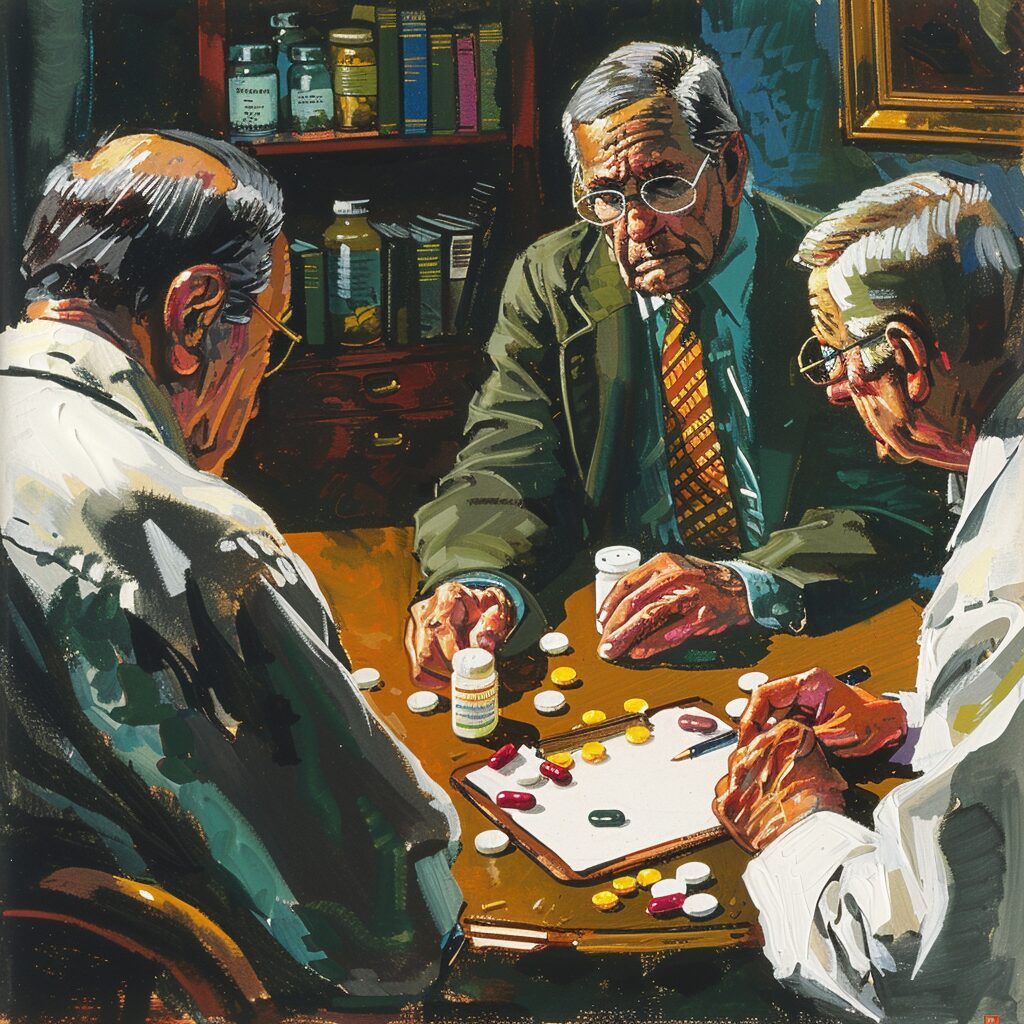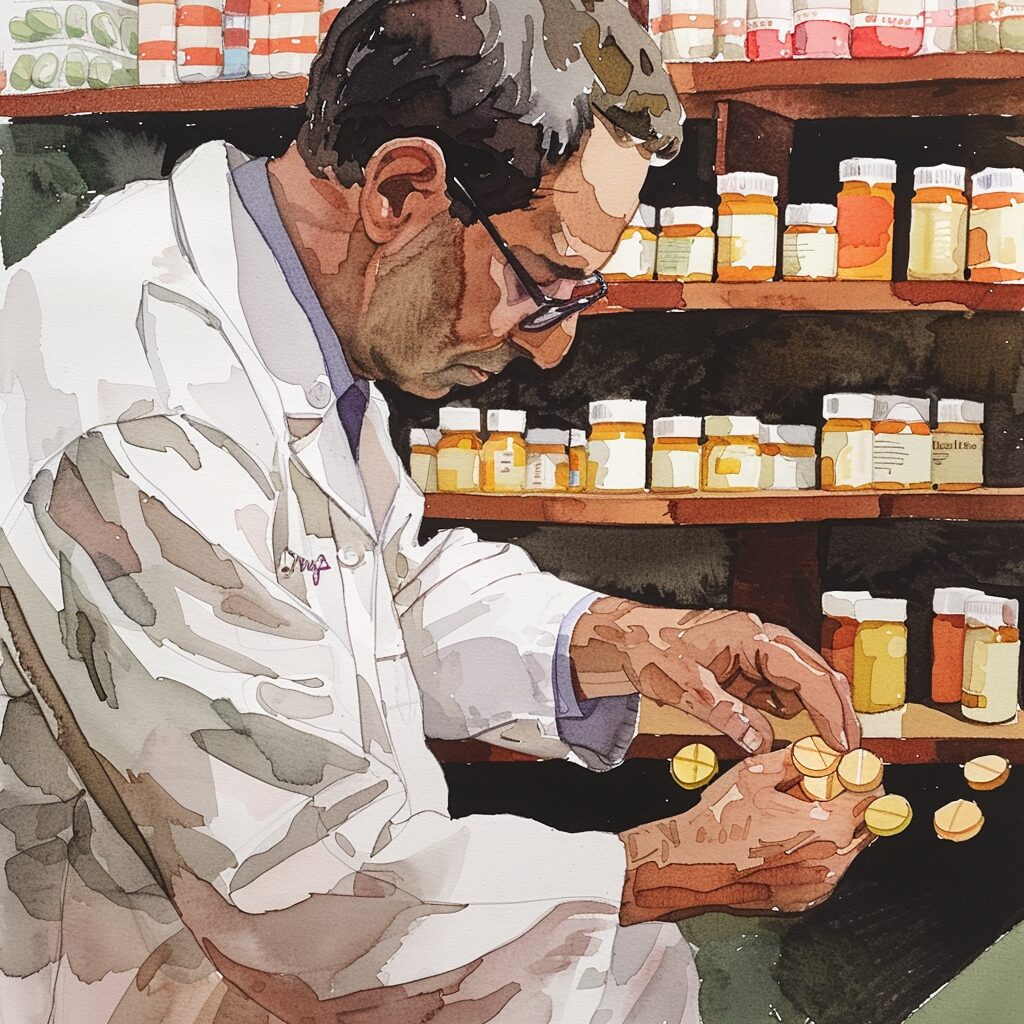What is binge drinking? Simply put, it’s the practice of consuming an excessive amount of alcohol in a short time frame, aiming to achieve a state of intoxication. Specifically, a binge drinking session typically elevates blood alcohol concentration levels to 0.08 percent or above, equating to five or more drinks for males, or four or more drinks for females, within about two hours. Recognized as a major public health issue, binge drinking poses serious risks to both physical and mental health. This article will explore the full scope of binge drinking, including its definitions, consequences, and ways to address and potentially overcome it.
Key Takeaways
- Binge drinking is characterized by consuming large amounts of alcohol with the intention of becoming intoxicated quickly, which raises blood alcohol concentration (BAC) to 0.08 percent or higher. This behavior significantly differs from regular alcohol consumption and poses substantial public health challenges.
- The risks associated with binge drinking are extensive and multi-faceted, including serious physical and mental health issues such as liver diseases, heart problems, depression, and social consequences like strained relationships, legal troubles, and workplace issues.
- Management and recovery strategies for binge drinking involve recognizing the behavior, setting personal limits on alcohol intake, handling peer pressure, finding alternative coping mechanisms, engaging in therapy or support groups, and possibly using medication approved for treating alcohol use disorder.
Defining Binge Drinking

Binge drinking is no mere indulgence in one too many drinks. It involves consuming alcoholic beverages rapidly with the objective of getting intoxicated over a short period. This pattern raises blood alcohol concentration (BAC) levels to 0.08 percent or higher, typically after consuming five or more drinks for males and four or more drinks for females within about two hours. It is this intensity and swift rise of BAC levels that set binge drinking apart from regular alcohol consumption.
The Substance Abuse and Mental Health Services Administration (SAMHSA) also defines binge drinking similarly, attributing it to consumption of five or more alcoholic drinks for males, or four or more drinks for females, on one occasion at least once in the past month. This pattern is not just excessive drinking: it’s a form of alcohol misuse that has become a significant public health issue.
Blood alcohol concentration (BAC)
The term Blood Alcohol Concentration (BAC) is often thrown around when discussing alcohol consumption, but what is its significance? A BAC of 0.08 percent or higher is typically associated with binge drinking, as defined by the National Institute on Alcohol Abuse and Alcoholism (NIAAA). This level of intoxication can impair brain function in the short term, resulting in slurred speech, blurred vision, and slower reaction times.
While a night of fun may seem harmless, elevated BAC levels can have serious consequences. Binge drinking increases the risk of alcohol poisoning, a potentially deadly condition when the body absorbs too much alcohol. Therefore, understanding and monitoring BAC levels is an important step in acknowledging the risks associated with excessive alcohol consumption.
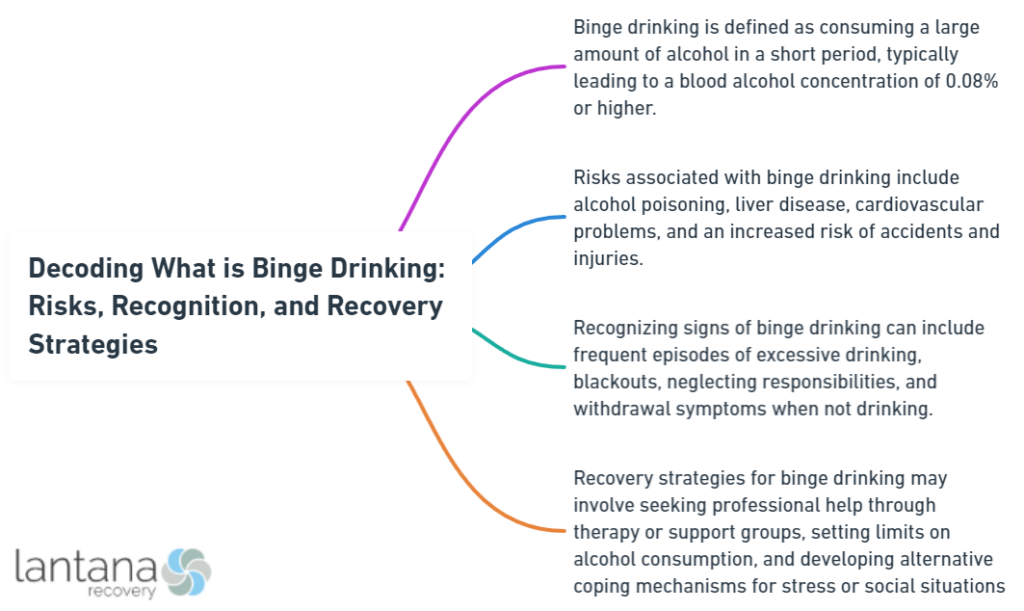
Binge drinking vs. regular alcohol consumption
It’s important to differentiate between binge drinking and regular alcohol consumption. While it might seem like they are two sides of the same coin, they are, in fact, distinct behaviors with different repercussions. Binge drinking involves consuming five or more alcoholic drinks on a single occasion for men, or four or more for women. This is in contrast to regular alcohol consumption, which does not necessarily meet these thresholds.
Binge drinking is a pattern of excessive alcohol use, separate from regular drinking habits, and it’s responsible for the majority of excessive alcohol use in the United States. This distinction is crucial in understanding the extent of the risk associated with binge drinking and the necessity for early intervention and treatment.
Alcohol Rehab South Carolina
If you or a loved one is struggling with alcohol addiction in South Carolina, seeking professional help from an alcohol rehab center is crucial. These facilities provide comprehensive treatment programs tailored to individuals’ needs, offering a supportive environment for recovery. In South Carolina, numerous rehab centers offer various therapies, including detoxification, counseling, and behavioral therapies, to address the physical and psychological aspects of alcohol dependence. Additionally, many rehab centers in the state emphasize holistic approaches, incorporating activities like yoga, meditation, and outdoor excursions to promote overall well-being during the recovery process. By enrolling in an alcohol rehab program in South Carolina, individuals can embark on a journey toward sobriety with the guidance and support of experienced professionals.
Consequences of Binge Drinking
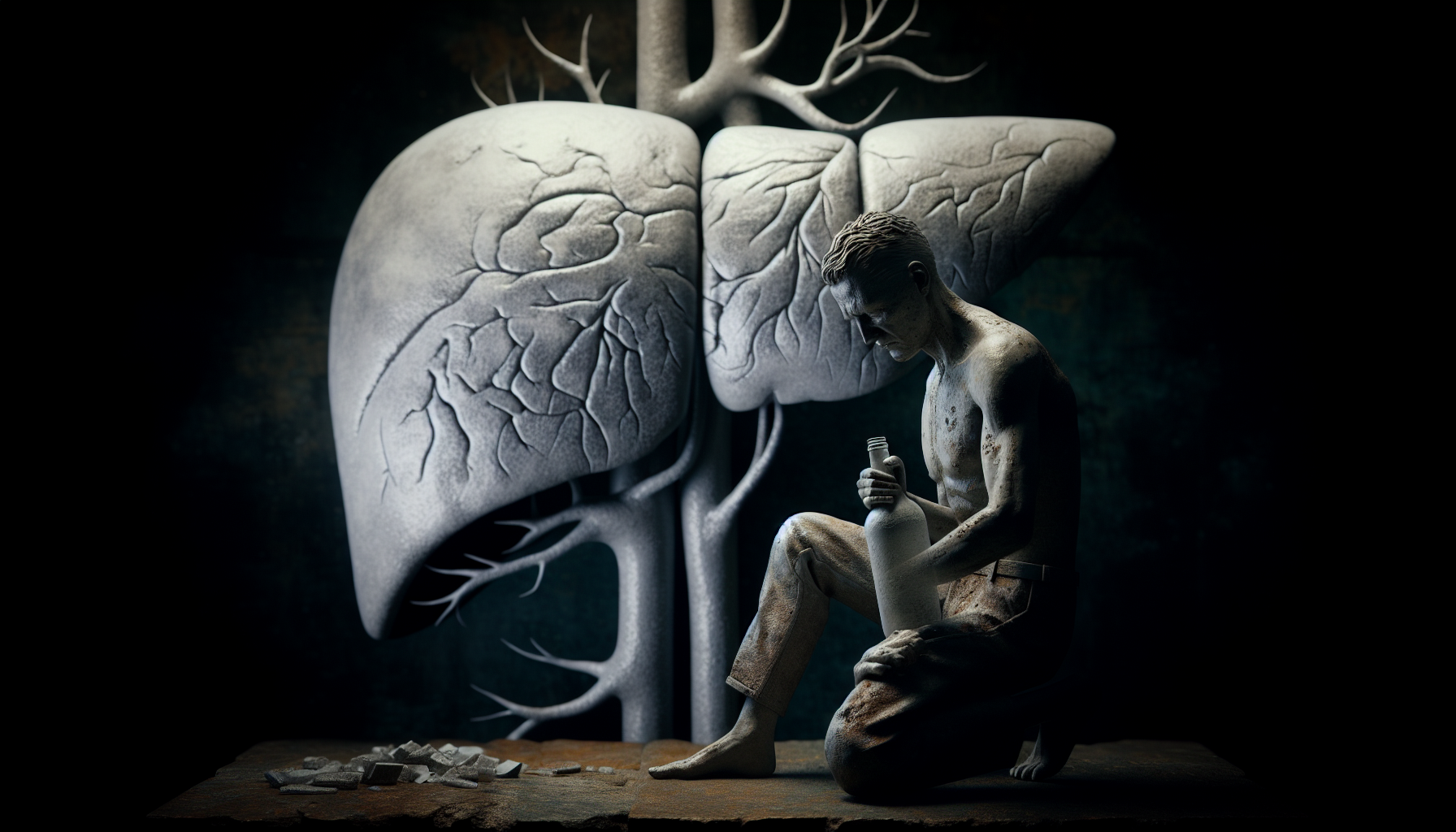
Binge drinking might seem like an isolated event, but it can leave a trail of destruction in its wake. The effects of excessive alcohol use are extensive, impacting physical health, mental well-being, and social relations. The consequences can be far-reaching, with each episode of binge drinking potentially adding to a cumulative damage that could be irreversible.
From liver diseases and cancer to depression and strained relationships, the fallout of binge drinking is multifaceted. But to truly comprehend the severity of these consequences, we need to delve deeper into the physical, mental, and social implications of this behavior.
Physical health risks
Excessive alcohol consumption through binge drinking can wreak havoc on the body, leading to serious physical health risks. The liver, a vital organ that processes alcohol, is particularly vulnerable, potentially leading to conditions such as alcoholic hepatitis and cirrhosis. Beyond the liver, binge drinking can result in acute pancreatitis, characterized by tissue edema and inflammation.
The physical health risks associated with binge drinking include:
- Irregular heartbeats, or arrhythmias, leading to sudden cardiac death
- Increased risk of cardiovascular conditions like hypertension and stroke
- Altered organ function
- Impaired insulin signaling
- Sexual dysfunction
- Weakened immune system
- Bone loss
Binge drinking, which involves drinking alcohol excessively, can have serious consequences for your physical health, and understanding your binge drinking habits is crucial to address the issue, especially in the context of underage drinking.
Mental health risks
Beyond the physical, binge drinking can also leave a devastating impact on mental health. Regular binge drinking episodes are associated with:
- less positive moods
- chronic depression
- increased stress hormone levels
- the development of anxiety disorders
- chronic stress
The impact on brain function is equally alarming. Neuropathological effects of binge drinking include impaired decision-making, blackouts, and potentially long-lasting changes to brain structure and function. Furthermore, there’s an increased risk of suicidal tendencies among binge drinkers, which can be compounded by related issues such as physical and verbal abuse.
Social implications
The detrimental effects of binge drinking also spill over into social relations. Excessive alcohol consumption can strain relationships, leading to problems such as domestic violence, mood swings, and wider family conflicts. In the workplace, binge drinking can result in poor performance, missed deadlines, and financial strain from overspending on alcohol.
Regrettably, legal issues like arrests for drunk driving or public intoxication are common among binge drinkers. Over time, individuals who binge drink often abandon activities they once enjoyed, leading to further social isolation. The social implications of binge drinking, therefore, extend beyond the individual, affecting their families, friends, and the wider community.
Why an Alcoholic Cannot Love
Why an alcoholic cannot love is a question deeply intertwined with the complexities of addiction. Alcoholism is a disease that hijacks not only the body but also the mind and soul of the individual. Love, in its truest sense, requires emotional presence, empathy, and a capacity for genuine connection. However, the grip of alcoholism often distorts these qualities, replacing them with self-destructive behaviors, deceit, and emotional numbness. The addict’s primary relationship is often with alcohol itself, leaving little room for authentic love towards others. Furthermore, the erratic behavior and unreliability that accompany addiction can erode trust and stability, essential components of any loving relationship. In essence, the very nature of alcoholism undermines the ability to cultivate and sustain love in a meaningful way.
Recognizing Binge Drinking Behavior

Recognizing binge drinking behavior is a crucial step towards addressing it. But how can you tell if someone is a binge drinker? Unlike regular alcohol consumption, binge drinking has unique signs, risk factors, and triggers. This recognition can be challenging, as these signs often manifest subtly before becoming evident.
The recommended timeframe for assessing binge drinking behaviors is the past six months. Longer timeframes can lead to recall bias, affecting the accuracy of the assessment, and a narrow two-week window might misclassify heavy regular binge drinkers. Let’s delve deeper into these signs and risk factors.
Common signs of binge drinking
Binge drinkers often exhibit the following signs:
- Drinking more than they planned to
- Drinking frequently
- Starting drinking early in the day
- Defensive behavior when discussing drinking habits
- Inability to slow down or stop drinking once they start
- Growing tolerance to alcohol
- Engaging in dangerous activities while under the influence
- Experiencing memory blackouts after drinking sessions
These signs indicate a more serious issue with alcohol consumption.
These signs can help identify whether someone is a binge drinker. However, it’s important to remember that not all binge drinkers will display these signs, and these symptoms can also be indicative of other substance use disorders. If you suspect that you or someone you know may be a binge drinker, it’s crucial to seek professional help.
Risk factors and triggers
Several risk factors and triggers can make someone more susceptible to binge drinking. These include:
- Social settings
- Pre-existing mental health conditions
- Personality traits
- Higher income and education levels
Interestingly, most young adults who engage in binge drinking are not alcohol dependent, highlighting a distinction between binge and regular heavy drinking.
By recognizing these risk factors and triggers, individuals can take proactive steps to manage their drinking habits. Some strategies to consider include:
- Changing activities from those centered around alcohol to other types of gatherings
- Seeking support from friends and family
- Engaging in stress-reducing activities such as exercise or meditation
- Setting limits on the amount of alcohol consumed
- Seeking professional help if needed
Moreover, understanding these triggers can also help in supporting someone who is struggling with binge drinking.
Strategies for Managing Alcohol Intake
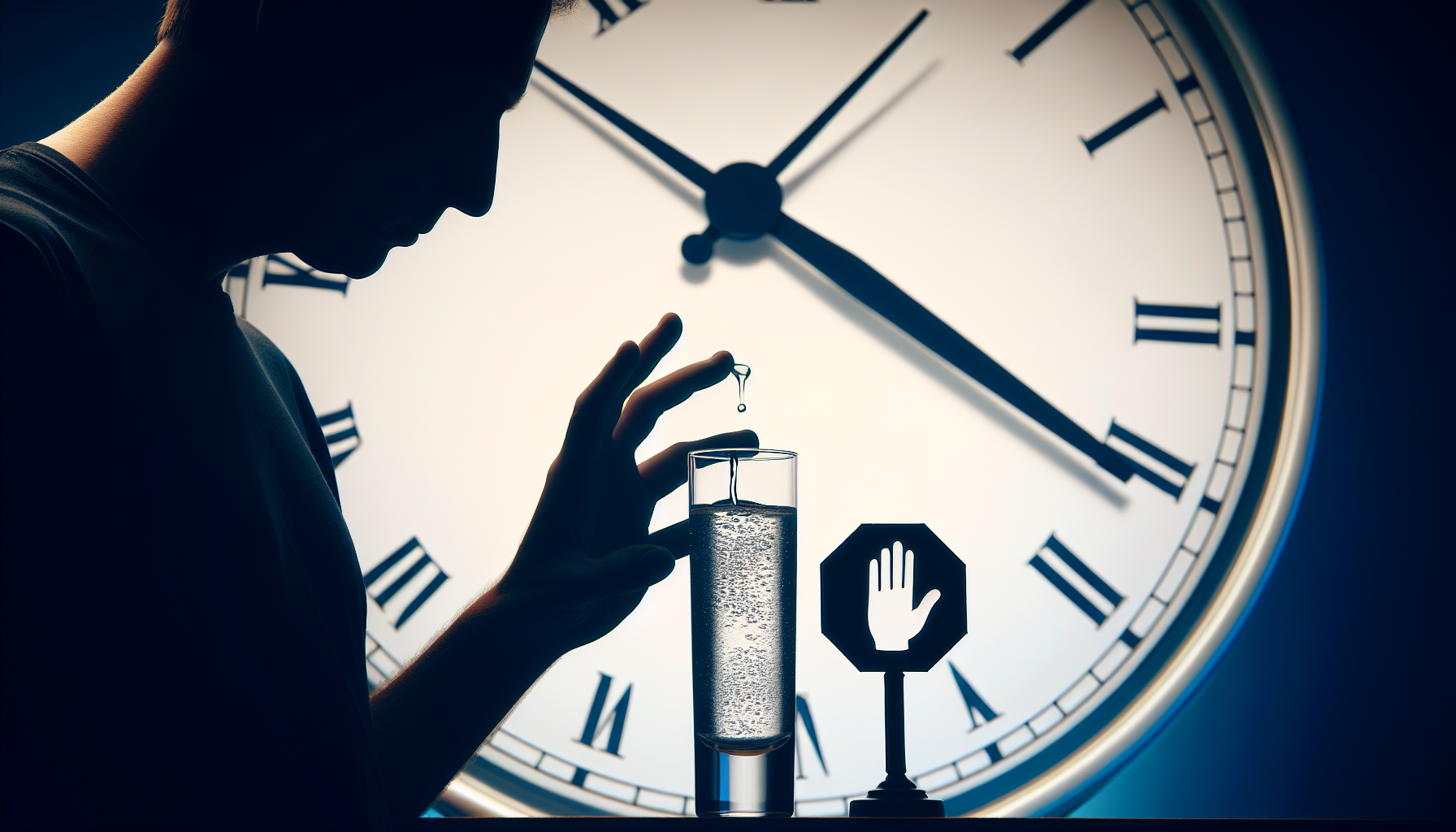
Once you’ve recognized binge drinking behavior, the next step is to manage alcohol intake. This step is crucial in addressing the problem and reducing the associated risks. Yet, managing alcohol intake is not always easy, especially when faced with social pressure or stressful situations.
From setting personal limits to handling peer pressure and adopting alternative coping mechanisms, there are several strategies that can be employed. These strategies can help individuals take control of their drinking habits, reduce their alcohol intake, and eventually overcome binge drinking.
Setting limits and pacing yourself
Setting personal drinking limits is a practical step towards managing alcohol intake. Men should limit their alcohol intake to two drinks or less per day, while women should limit to one drink or less. Another important step is pacing oneself. Alternating alcoholic drinks with non-alcoholic beverages and sipping slowly can regulate the pace of alcohol consumption.
Using an app to track the number of drinks consumed can help maintain awareness of personal alcohol intake against established limits. By defining clear alcohol intake limits with friends or family members, you can encourage adherence during joint drinking occasions. These strategies can play a crucial role in preventing binge drinking and promoting healthier drinking habits.
Handling peer pressure
Peer pressure can be a significant trigger for binge drinking, especially in social situations. Establishing a clear personal stance on not drinking strengthens resolve and makes it easier to resist peer pressure. This approach can be reinforced by creating and reviewing a list of reasons not to drink before social events.
Having an exit strategy for situations where peer pressure to drink is overwhelming ensures one can leave without giving in to the pressure. Some strategies to consider include:
- Offering to be the designated driver, providing a socially responsible reason for abstaining from alcohol in a group setting
- Suggesting alternative activities or venues that don’t involve drinking
- Surrounding yourself with supportive friends who respect your decision to abstain from alcohol
- Practicing assertiveness skills to confidently say no to peer pressure
By handling peer pressure effectively, individuals can avoid situations that might lead to binge drinking.
Alternative coping mechanisms
Finding alternative coping mechanisms can be a powerful tool in managing alcohol intake. Relaxation techniques, engaging in hobbies, and seeking professional help when needed can provide positive outlets for stress and anxiety, reducing the urge to drink. Practices such as deep breathing exercises, stretching, or meditation can help manage stress levels without alcohol.
Participating in enjoyable activities away from alcohol can enhance mood and act as positive distractions from stress. Developing hobbies and interests that do not involve alcohol can provide fulfillment and a meaningful diversion from drinking. Openly talking with trusted individuals about concerns can offer emotional support and reduce the feeling of isolation that often accompanies binge drinking.
Supporting Someone Struggling with Binge Drinking

If you know someone who is struggling with binge drinking, it’s important to offer support. Voicing concerns and offering support in the right way may help motivate them to change their ways. Remember, speaking up about a loved one’s binge drinking is a compassionate gesture, even if you encounter resistance.
Supporting a loved one who is ready to make a change involves:
- Creating a concrete plan
- Setting an example by not drinking in excess
- Giving them responsibilities in social situations
- Pursuing new interests together that don’t involve drinking
- Being there in times of stress
But how do you initiate this conversation, and how do you encourage change?
Initiating a conversation
Initiating a conversation about binge drinking requires tact and empathy. It’s important to acknowledge your feelings about your loved one’s binge drinking and prepare for the conversation through practices such as scripting or role-playing. Opting for a setting where both parties are calm and undistracted maximizes focus during the conversation.
Use non-judgmental, positive language, provide specific observations related to the drinking, and suggest enjoyable activities that do not include alcohol. Show support by being available to talk, especially when the urge to drink arises, and set measurable goals and plans for follow-ups on progress or goal adjustments.
Encouraging change and providing support
Once the conversation has been initiated, the next step is to encourage change and provide support. Engage in activities with the person that do not involve drinking, such as crafting projects or outdoor activities, to shift the focus away from alcohol. Encourage your loved one to engage in hobbies or activities that do not involve alcohol as a means to distract from the urge to binge drink.
Offer emotional support during stressful times by being available to talk and suggesting alternative coping mechanisms that do not involve alcohol. For loved ones who are parents of teenagers who binge drink, it’s important to understand their motivations and have nonjudgmental conversations, while also establishing clear rules and consequences related to alcohol use.
Treatment Options for Binge Drinking
While managing alcohol intake and providing support are important steps in addressing binge drinking, sometimes professional treatment is necessary. Treatment options for binge drinking can range from therapy and medication to support groups. Each of these can play a crucial role in recovery, and the best approach often involves a combination of these treatments.
Treatment for binge drinking is more beneficial when addressed early on. Motivational interviewing and cognitive behavioral approaches are effective therapy options for addressing binge drinking. Moreover, mutual support groups like Al-Anon and Alateen offer free support for recovering from problematic drinking and supporting affected friends and families.
What is Alcohol Use Disorder
Alcohol Use Disorder (AUD) is a chronic medical condition characterized by an inability to control alcohol consumption despite its negative consequences on one’s health, relationships, and social obligations. Individuals with AUD often experience intense cravings for alcohol, leading to compulsive drinking behaviors. This disorder can manifest in various ways, ranging from mild to severe, depending on the frequency and quantity of alcohol consumed. AUD significantly impacts an individual’s mental and physical well-being, often resulting in impaired judgment, liver damage, and increased risk of accidents or injury. Treatment for AUD typically involves a combination of therapy, medication, and support groups to help individuals manage their alcohol consumption and regain control over their lives. Recognizing the signs and seeking help early on is crucial in effectively managing Alcohol Use Disorder and preventing its detrimental effects.
Therapy
Therapy can be an effective treatment option for binge drinking. Cognitive Behavioral Therapy (CBT) helps individuals by focusing on the identification and alteration of negative thoughts and behaviors into positive ones. Dialectical Behavioral Therapy (DBT) provides strategies for emotional balance and embracing change, which include core mindfulness, distress tolerance, interpersonal effectiveness, and emotion regulation.
Motivational Interviewing (MI) aids those suffering from drug and alcohol dependence by motivating them to address their ambivalence and take decisive actions toward overcoming addiction. Psychotherapy for alcoholism can occur in different formats such as one-on-one, group, or family therapy sessions. Online therapy options are also available, although they may not be suitable for those with severe withdrawal symptoms or co-occurring mental disorders.
Medication
In some cases, medication can be a useful tool in treating binge drinking. The FDA has approved three medications specifically for the treatment of alcohol use disorder: naltrexone, acamprosate, and disulfiram.
Naltrexone helps individuals maintain sobriety by reducing the craving for alcohol, while acamprosate aids in reducing alcohol consumption by promoting balance disrupted by alcohol dependence. Disulfiram serves as a deterrent for drinking because it causes unpleasant effects like nausea and palpitations when alcohol is ingested.
Support groups
Support groups can offer a lifeline for those struggling with binge drinking. These groups provide a safe space for individuals to share their experiences, gain insights from others who are dealing with similar issues, and provide mutual support. Mutual support groups like Al-Anon and Alateen offer free support for recovering from problematic drinking and supporting affected friends and families.
Support groups provide a sense of community, reduce feelings of isolation, and can help individuals stay motivated on their journey towards recovery. They can also offer practical tips and strategies for managing cravings and maintaining sobriety. For many individuals struggling with binge drinking, these support groups can be a source of hope and strength.
Summary
Binge drinking is a complex issue with far-reaching consequences, affecting individuals physically, mentally, and socially. Recognizing this behavior, managing alcohol intake, and providing support are crucial steps in addressing this problem. While the journey towards overcoming binge drinking can be challenging, it’s important to remember that help is available, and recovery is possible.
We hope this blog post has provided you with a deeper understanding of binge drinking and equipped you with strategies to address it. Remember, it’s never too late to make a change. With the right support and treatment, one can overcome binge drinking and lead a healthier, happier life.
Frequently Asked Questions
What is a binge drinker?
Binge drinking is defined as consuming 5 or more drinks for men or 4 or more drinks for women in about 2 hours, leading to a blood alcohol concentration of 0.08 percent or higher. It is the most common and costly pattern of excessive alcohol use in the United States.
How many units is binge drinking?
Binge drinking is defined as consuming more than 8 units of alcohol in a single session for males, or more than 6 units in a single session for females, according to the NHS. This is considered drinking heavily over a short space of time.
What are the 4 types of drinker?
There are four types of drinkers: Hemingways, Mary Poppins, Nutty Professors, and Mr. Hydes. These categories reflect the varying personalities and behaviors of individuals when they consume alcohol.
What are the effects of binge drinking?
Binge drinking can have severe physical, mental, and social effects, such as liver diseases, increased risk of cancer, depression, anxiety, and strained relationships. It’s important to be aware of these risks and make informed choices about drinking.
How can I recognize binge drinking behavior?
If you find yourself drinking more than planned, displaying defensive behavior about your drinking habits, experiencing memory blackouts, or engaging in risky behavior while intoxicated, you may be showing signs of binge drinking behavior. Take these signs seriously and consider seeking help.




